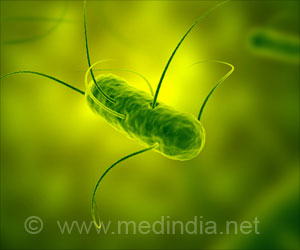Scientists from University of California, San Diego claim to have uncovered a mechanism that explains how bacteria interact with each other - a finding that would lead to new therapies
In a major finding that may lead to new therapies for diseases such as cancer, diabetes and allergies, scientists from the University of California, San Diego claim to have uncovered a mechanism that explains how bacteria interact with each other.
Lead researcher Dr Pieter C. Dorrestein, assistant professor at UC San Diego's Skaggs School of Pharmacy and Pharmaceutical Sciences have developed novel tools that will enable scientists to understand how different cell populations of cells communicate.Using a technology called natural product MALDI-TOF (Matrix Assisted Laser Desorption Ionization-Time of Flight) imaging mass spectrometry, the researchers could successfully translate the language of bacteria.
Microbial interactions, such as signaling, have generally been considered by scientists in terms of an individual, predominant chemical activity.
The new approach has enabled researchers to analyse the effects of multiple microbial signals in an interspecies interaction, revealing that chemical "conversations" between bacteria involve many signals that function simultaneously.
In order to communicate, bacteria secrete molecules that tell other microbes, in effect, "I am irritated, stop growing," "I need more nutrients" or "come closer, I can supply you with nutrients."
However, other molecules secreted by the microorganism may turn off the body's defense mechanisms.
Advertisement
"We want to begin to understand how those bacteria interact with our cells. This is a powerful tool that may ultimately aid in understanding these interactions," Nature quoted Dorrestein as saying.
Advertisement
For instance, knowing how microbes interact with human immune cells could lead to discovery of novel immune system modulators, and how these molecules control bacterial growth may lead to new anti-invectives.
The study is published in Nature Chemical Biology.
Source-ANI
TAN









